-
- De Havilland Aircraft
- UC-1 / U-1B Otter
-
- "The remaining UC-1 Otters were retired from Antarctic Service with VX-6 after a
final flight on January 16th, 1966."
-
- Photo From Billy-Ace Baker
-
- Last VX-6 UC-1 Otter Flight On The Antarctic Continent.
- UC-1Otter Retires With A Traditional Naval Ceremony Complete With Sideboys.
- Last Otter Flight information:
- Pilot: M.E. Morris
Copilot: Joe Holick
Date: January 23, 1966
Aircraft: U-1B 144670
Flight time: 1.9 hrs
McMurdo - McMurdo
|
-
- 142424
- De Havilland C/N 76
- Flight Mishap - Deep Freeze 1
|
- Photo from the VXE-6 Decom CD
|
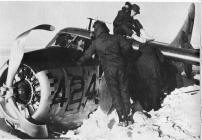
Photo from Bob Nyden
- "20 Yrs On The Ice"
|
- Photo from Billy-Ace Baker
|
- Crashed on takeoff at near Cape Bird, Ross Island, Antarctica. Dec 22, 1955. No
fatalities. - Joe Baugher
-
- The Aircraft commander reported that the flight controls didn't feel "right"
and could not be moved forward of the neutral position. About 50 feet after takeoff the
Otters ski's brushed the snow and the aircraft hit had but flat. Both main ski struts were
forced into the fuselage to such an extent that the aircraft was a strike. Salvageable
parts were removed and the aircraft was left to float out on the sea ice. It is
presumed to have sank.
- (United States Aircraft Losses in Antarctica)
|
|
-
- 142425
- De Havilland C/N 77
- Flying
|
- Photo from the North Star air Ltd webpage
|
- VX-6 Para-Rescue Team Member makes a practice jump
- Photo From Billy-Ace Baker
|
-
|
- After VXE-6 "425" went to the Naval Aerospace Recovery Center at El Centro,
California. It was also with the Parachute Test Range at El Centro. It was then stored at
Davis-Monthan AFB Arizona October 1978 to May 1979.
- It was sold and operated as N1037G by 40 Mile Air of Tok, Alaska, then purchased by a
private party in Auburn, Washington and registered N129JH. During this time it was
converted it to a turbine Otter with a PT-6 engine. "425" was then sold to
North Star Air of Pickle Lake, Ontario, who now operate it, registered C-GCQA. - Karl
Hayes
|
|
-
- 142426
- De Havilland C/N 78
- Ground Mishap - Deep Freeze II
|
-
- While parked at Little America V an 80 mph wind storm opened the tiedown rings and the
aircraft was blown away.
- (United States Aircraft Losses in Antarctica)
|
-
- 142427
- De Havilland C/N 79
- Ground Mishap - Deep Freeze IV
|
-
- Cracked fuselage during taxiing on Ross Sea ice. Struck in Antarctica.
- Oct 22, 1958.- Joe Baugher
-
- The Otter was supporting a science party taking observation readings on the Ross Ice
Shelf. During the ground taxi to take the science party to another observation spot the
fuselage cracked. It was able to be flown back to McMurdo. The Otter was not repaired and
was struck in mcMurdo.
- (United States Aircraft Losses in Antarctica)
|
-
- 144259
- De Havilland C/N 60
- Ground Mishap - Deep Freeze 1
|
-
- When UC-1 144260 crashed into the mountain 144259 was placed on board the USS Glacier to
transport it from McMurdo to Little America V to assist in the rescue of the downed
aircrew on the mountain (see 144260). On Feb 10, 1956 during the offloading process a
hoist cable broke and the Otter plunged to the ice shelf and landed on its right wing and
landing gear. The fall damaged the wing extensively and fractured the fuselage. The
aircraft was judged to be a strike.
- (United States Aircraft Losses in Antarctica)
|
-
- 144260
- De Havilland C/N 62
- Flight Mishap - Deep Freeze 1
|
-
- Crashed into summit of mountain on Edward VII Peninsula in Antarctica. Feb 3, 1956. No
injuries. - Joe Baugher
-
- On Feb 3 1956, two hours after leaving Little America V while en-route to Mile 38 of the
Army-Navy Trail the Otter started picking up icing on the propeller and the aircraft flew
into the summit of a snow covered mountain Edward VII Peninsula in Antarctica. The
crash of the impact was slight and no one was injured. The survivors walked 40 miles of
the 110 miles back to Little America V before being rescued by a VX-6 helicopter.
- (United States Aircraft Losses in Antarctica)
|
-
- 144261
- De Havilland C/N 66
|
-
|
-
- 144669
- De Havilland C/N 148
- Flight Mishap
|
-
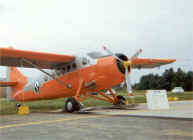 - Photo from the Guy Van de Merckt Collection.
-
- In 1965 the Comite Antarctique Belgo Neerlandais (Belgian-Dutch Antarctic Expedition)
was loaned 144669 from the US Navy, and it was transferred to them in 1967. It was
registered as OO-HAD. It crashed at the South
African SANAE Station in the Antarctic on 9 February 1970 and was a complete write off, as
well as all the expensive scientific equipment on board. - Karl Hayes
-
- On 6 November 1967 this De Haviland Canada DHC.3 Otter was registered
OO-HAD to the Belgisch-Nederlandse Zuidpool Expeditie (Belgian-Dutch South Pole
Expedition). The machine was obtained from the U.S. Navy (Bu144669) but
unfortunately crashed at the South Pole on 9 February 1970. Some parts were recovered and
used in the restoration of its twin-brother OO-SUD in the Royal Army Museum in Brussels. -
Guy Van de Merckt
|
-
- 144670
- De Havilland C/N 151
- Flying
|
-
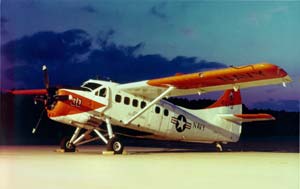 - Photo from the Naval Test Pilot School webpage
-
- US Navy Test Pilot School Otter is last U.S. Military Otter flying!
The sole remaining active duty Otter is based at PAX River, MD and is still active for the
Naval Test Pilot School.
|
-
- 144671
- De Havilland C/N 150
- Ground Mishap - Burned
|
-
- 144671 was accepted to the Naval Test Pilot School on 11/29/74 and records show that it
was stricken from the register on 12/24/74 without having been flown.
- It actually went to the Army National Guard's 162nd ATB of the Connecticut NG. In 1979
the aircraft went back to the Navy at the Naval Test Pilot School at PAX River, MD, and
was sold some months later on the civil market. - Johan Pieters
-
- After this was sold, it was trucked to Calgary, Alberta intended to be rebuilt, but was
destroyed in a hangar fire on 14 May 1983. - Karl Hayes
|
-
- 144672
- De Havilland C/N 160
- On Display
|
-
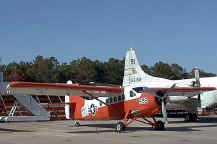 - Photo from the National Museum of Naval Aviation webpage
-
- Re-designated NU-1B. Now on display at the National Museum of Naval Aviation,
Pensacola, FL. -Joe Baugher
-
- "The Museum's "Otter" (BuNo 144672) had wintered at Antarctica during
Deep Freeze II and III, was returned to the U.S. for overhaul, re-designated NU-1B, and
then assigned to the Test Pilot Training School, NATC Patuxent River, Md. Following that
tour it was assigned to the Naval Air Training Command at Pensacola and thence to the
Museum in 1975 in a flyable condition." - National Museum of Naval Aviation webpage
|
-
- 144673
- De Havilland C/N 163
- Flight Mishap - Deep Freeze IV
|
-
- On 4 Jan 1959 Otter 144673 crashed while taking off from the Marble Point dirt runway.
As the aircraft departed the runway it made a very steep left turn and the left wing hit a
small knoll. The aircraft cart-wheeled and crashed.
- Killed were Lieutenant Harvy E. Gardner and Lieutenant (jg) Lawrence J. Gardner.
The cause of the crash was never determined.
- (United States Aircraft Losses in Antarctica)
|
-
- 144674
- De Havilland C/N 166
- Flying
|
-
- Photo by Conrad George Merrick
-
- 144674 went to the Army National Guard 142nd TARS of the Missouri NG. After using the
Otter, the MO NG transferred the aircraft to the Civil Air Patrol who disposed of the bird
via the civilian market. - Johan Pieters
-
- When with the Civil Air Patrol, this was registered N5348G. It was then sold in Canada
to Sioux Narrows Airways of
Winnipeg registered C-GGSL. Sold on to Parsons Airways Northern of Flin Flon, Manitoba and
then to Selkirk Air of Selkirk Manitoba who still operate it. It has been re-engined with
a Polish PZL 1000 horse power engine. - Karl Hayes
|
-
- 147574
- De Havilland C/N 126
- In Storage Washington State
|
-
- Otter 126 started out life as XL710 of the Royal Air Force, acquired for use in the
Antarctic during the 1958 Geophysical Year. After RAF service, it was handed over to the
US Navy, which explains why its Navy tail number is higher than the others, because it was
acquired later. When the Navy were finished with it, they handed it over to the New
Zealand Air Force as NZ-6081 intended to be operated by them in the Antarctic, but that
never happened. It was sold in Canada in 1964 and registered CF-PNV to Georgian Bay
Airways of Toronto. It was then sold to La Ronge Aviation of La Ronge Saskatchewan and
crashed at Lynn Lake, Manitoba in May 1976. The wreck was sold to Cox Air Resources. Ray
Cox was quite a well known fellow in Otter circles. He was making the first Otter turbine
conversion, Otter number 421, and as soon as this was certificated, he was going to
rebuild 126 as a turbine.
- Unfortunately his prototype turbine conversion crashed and he then ran out of money.
Otter 126 was sold and is now registered N63535 to another Otter rebuilder located north
of Seattle. It never was repaired after its May 1976 crash and it now sits in a yard north
of Seattle awaiting a decision as to its fate. The fuselage is basically intact and the
wings are there, so I am sure it will be rebuilt at some stage. - Karl Hayes
-
- Previously XL710/Bu147574. Used in the Commonwealth Antarctic Expedition in 1957-58.
Purchased from United States Navy in 1960 to replace the Beaver. Transported from
Christchurch to Wellington on 17 October 1960 by USAF Globemaster for overhaul by De
Havillands. First flight with RNZAF was ex overhaul in November 1961. Placed in storage at
Woodbourne until 25 May 1962 when it was flown to Wigram for storage. Disbandment of the
Antarctic Flight led to the aircraft being offered for sale by tender and it was sold to
Georgian Bay Airlines of Toronto, Canada. Flown from Wigram to Wellington on 14 June 1963.
Registered to De Havilland Aircraft Company as ZK-CFH on 09 July 1963 and cancelled from
register 01 August 1963. Crashed in Canada in 1976. Rebuilt and registered in USA as
N63535 on 12 December 1997.
- - New Zealand Military Aircraft Serial Numbers
-
- All photos by Joe Hawkins
- Me and the wife took a nice Sunday afternoon drive up into the Cascade Foothills and
found 147574 sitting in a fuselage cradle. The wings are removed as is the landing gear
and the forward portion of the fuselage / engine nacell. There are
- plans to restore it to a like new flyable condition and paint it in the original VX-6
paint scheme markings. On the two
- shots of the side of the fuselage you can see the original orange paint job.
|
-
-
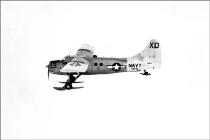
|
-
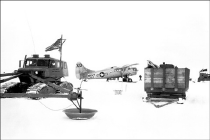
|
-
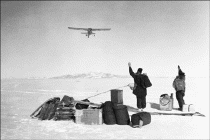
|
-
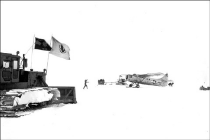
|
-
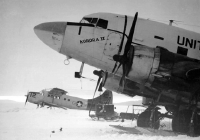 -
|
-
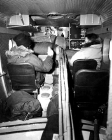
|
-
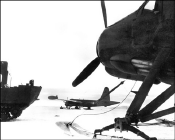
|
-
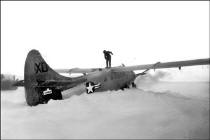
|
-
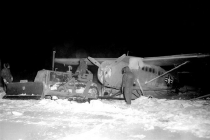
|
-
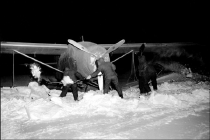
|
-
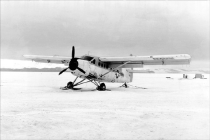
|
-
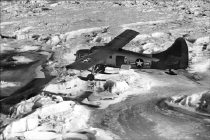
|
-
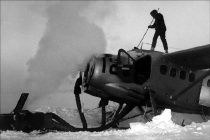
|
-
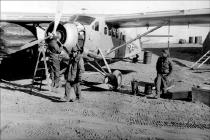
|
-
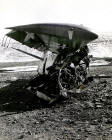
|
-
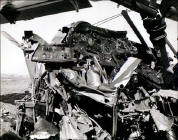
|
-
|
-
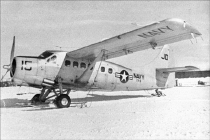
|
-
- Photo is of an Otter aircraft after being covered by winter
winds at Kiel Field, Little America FIVE
- Photo by Jim Waldron
|
-
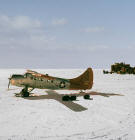 - This picture is of an Otter at Little America during the summer of 1956. It was a great
little aircraft and marvelous on skis. It would ski sideways should you turn abruptly
while taxiing. I found this helpful when approaching the refueler. I would taxi directly
at the refueler, give full right rudder and would slide sideways to a gentle stop abreast
the refueler. In bringing diesel fuel to the fuel caches along the tractor trail the crew
would load several 55 gallon barrels of diesel fuel in the cabin and when we reached the
cache site the crewman would roll the barrels out the door and within moments we would be
airborne headed back to Little America for more barrels. Some days or nights we would make
as many as four round trips to the caches, depending on the distance from Little America.
Text and photo from Jim Waldron
|
-
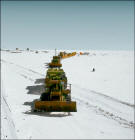 - Tractor Train Departure
It was an exciting day when the Tractor Train departed from Little America. These D-8
Caterpillar tractors, pulling large sleds, were headed 400 miles inland to the Marie Byrd
Station, where new buildings were to be assembled. One of the sleds being pulled was
a combined kitchen, sleeping quarters and sick bay. The tractors were constantly on the
move, 24 hours a day, and only stopped when they reached fuel caches where they refilled
their tanks with diesel fuel. The caches were propositioned and filled with fuel by the
R4D and Otter aircraft. Once the sleds were offloaded at Marie Byrd Station, the tractors
and empty sleds returned to Little America.
Text and photo from Jim Waldron
|
-
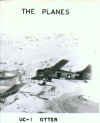 - Photo from William Staskel
|
-
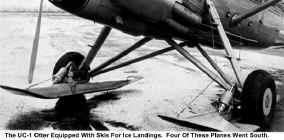 - Photo From Billy-Ace Baker
|
-
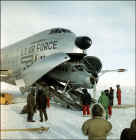 - Photo from Jim Waldron
|
-
|
-
- Photo from Billy-Ace Baker
|
-
|
-
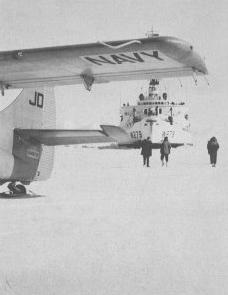 - Photo From Billy-Ace Baker
|
-
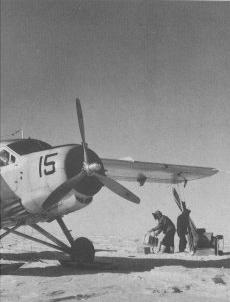 - Photo From Billy-Ace Baker
|
-
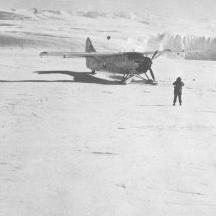 - Photo From Billy-Ace Baker
|
-
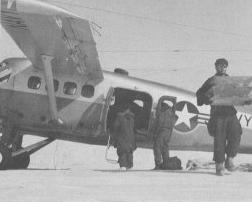 Photo From Billy-Ace Baker Photo From Billy-Ace Baker
|
-
|
-
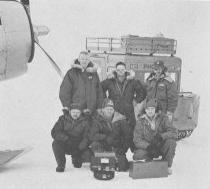 - Photo From Billy-Ace Baker
|
-
- Unless otherwise noted all photos are from the VXE-6 decommissioning CD
|
-
|
-
- DHC Otter info, specs, production numbers
- http://www.xdh.ca/DHC_Aircraft/DHC-3/dhc-3.html
-
- The U.S. Army Otter-Caribou Association
http://www.otter-caribou.org/
-
- Dave Riley's webpage
- http://www.radiocom.net/vx6/otters.htm
- http://www.radiocom.net/vx6/noel2.htm
-
- JP's Panzers Forums - VX-6 Otter info
- http://pub131.ezboard.com/fjpspanzersfrm64.showMessage?topicID=89.topic
-
- National Museum Of Naval Aviation
-
- US Navy Test Pilot School
-
- Joe Baugher's US Military Aircraft Serial Number webpage
-
- US Army 12th Aviation Company Website
-
- Absolutely great Otter Pics & data
-
- Dan Merrick's Site
-
- Guy Van de Merckt Collection.
-
- New Zealand Military Aircraft Serial Numbers
- http://www.adf-serials.com/nz-serials/nz6081.shtml
-
- emails from:
- Jim Waldron JWALDRON@aol.com
- Billy-Ace Baker http://www.oaedks.net/index.html
-
|



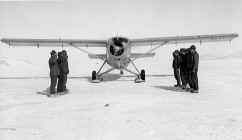
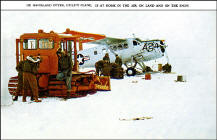

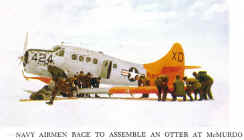
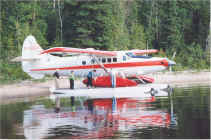
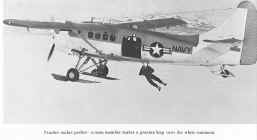
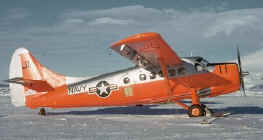
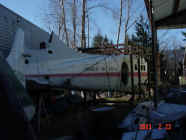
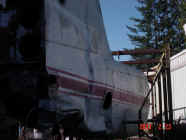
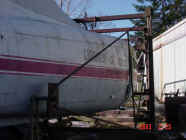
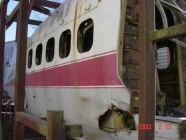
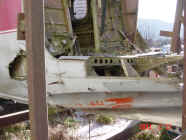
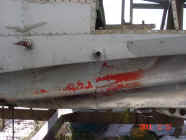
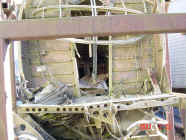

















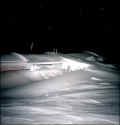





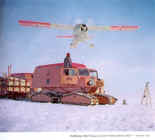



 Photo From Billy-Ace Baker
Photo From Billy-Ace Baker